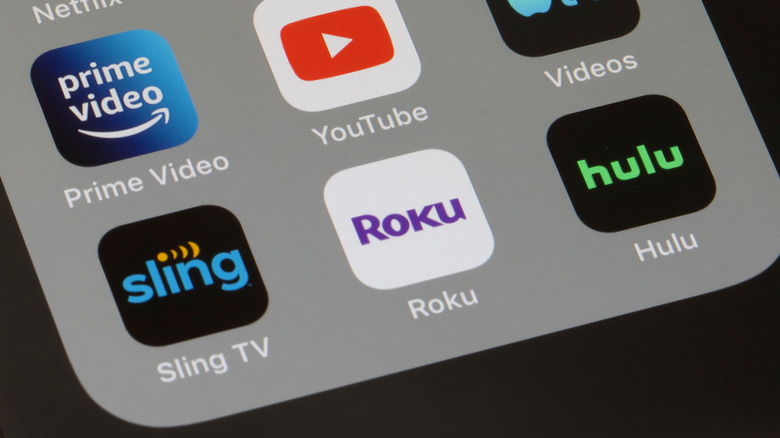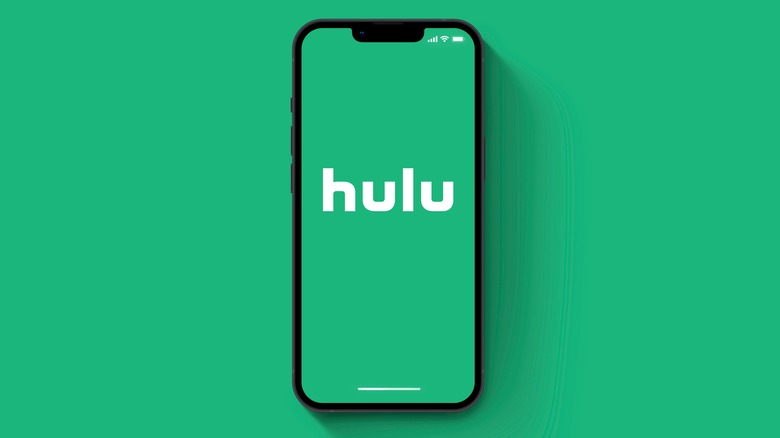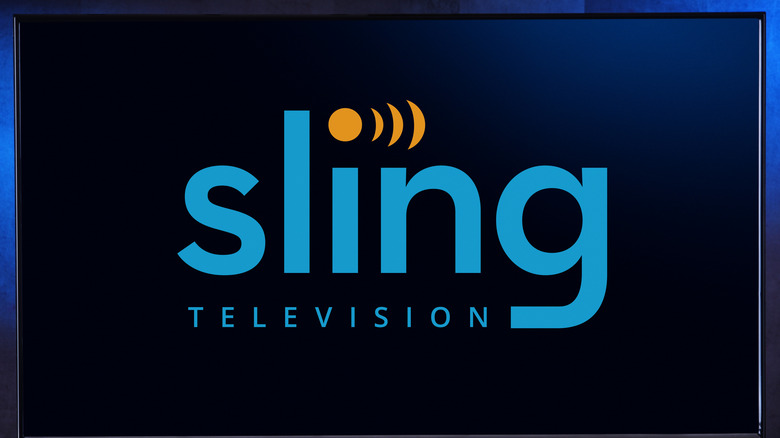Hulu Vs. Sling TV: Which Has The Most Live Channels?
In the olden days, if you wanted to watch TV, you needed to purchase a channel package from your local cable provider. This involved everything from selecting a company, picking your channels and having to wait for the service guy to show up and plug everything in.
The streaming age has expedited or eliminated this process depending on users preferences, though there are still a few chin-scratchers to deal with. Namely, if you want to get the most possible live channels out of your streaming service, which should you sign on with? Two of the biggest names in the live streaming TV scene are Hulu and Sling TV, each with their own benefits, pricing, and of course, channel lineups. In order to find the best service to ensure you never need to get up from the couch again, let's do a little comparison for science.
Hulu's live channels
To clarify, the base Hulu service only has video-on-demand content, no live channels. If you want to get live channels, you need to sign up with their highest-tier package, Hulu + Live TV. It's a bit pricey, but in exchange for that price tag, you get quite the comprehensive lineup of live channels.
The Hulu + Live TV package includes 103 live channels, running the gamut of major news networks, sports, music, entertainment for all ages, and more. Additionally, there are several add-on channel bundles you can tack onto your package. There's a premium bundle with 4 more channels, a sports bundle with 6 more channels, an entertainment bundle with 18 more channels, and a Spanish-language bundle with 8 more channels. If you got every single add-on bundle available, that'd bring the grand total to 139 live channels. Depending on your location, you may also have access to local affiliate news networks, but since your mileage may vary with that, we won't include those in the final tally.
Sling TV's live channels
Compared to Hulu, Sling TV is intended more as a full-on replacement for a traditional cable package. While it does have a library of on-demand content, the real meat and potatoes of the service is in its live TV offerings.
Sling offers two general packages, Orange and Blue. The Orange package focuses on news and family programming, with 31 channels including the major news networks, Cartoon Network, TBS, the Food Network, and so on. The Blue package is better for sports and entertainment, featuring 39 channels like ESPN, Comedy Central, A&E, and more. There's a lot of overlap between these two packages, and if you want to take the guesswork out, you can get a combined bundle with all 43 basic channels. That's not the end of it, though; Sling features a ton of add-on channels you can tack onto your package piecemeal. Theoretically, if you were to get access to every single channel on Sling's docket, you're looking at a grand total of 259 channels.
The winner is...
If we're comparing raw numbers of live channels available, Sling TV beats out Hulu by a mile, packing 259 potential channels versus Hulu's 139. If you're looking to get the absolute greatest amount of live channels in a single service, and aren't particularly interested in on-demand content, then Sling TV is your huckleberry.
It is worth mentioning, though, that Hulu's pricing and packaging is a bit more straightforward than Sling's. Hulu + Live TV has an ad-supported package for $69.99 a month and an ad-free package for $82.99 a month, though that only applies to on-demand content. If you only care about live channels, you can get the cheaper package. By contrast, Sling's combo package with 43 channels costs $55 a month, but the individual add-ons can add anywhere from $6 to $20 to your bill. Hulu also has live channel add-ons, but in fewer packages with more consistent prices.
What we're getting at here is that if you want a simpler live TV package, Hulu is probably the easier choice. If you want something more akin to traditional cable with greater customizability, though, then Sling will sate your TV cravings.



